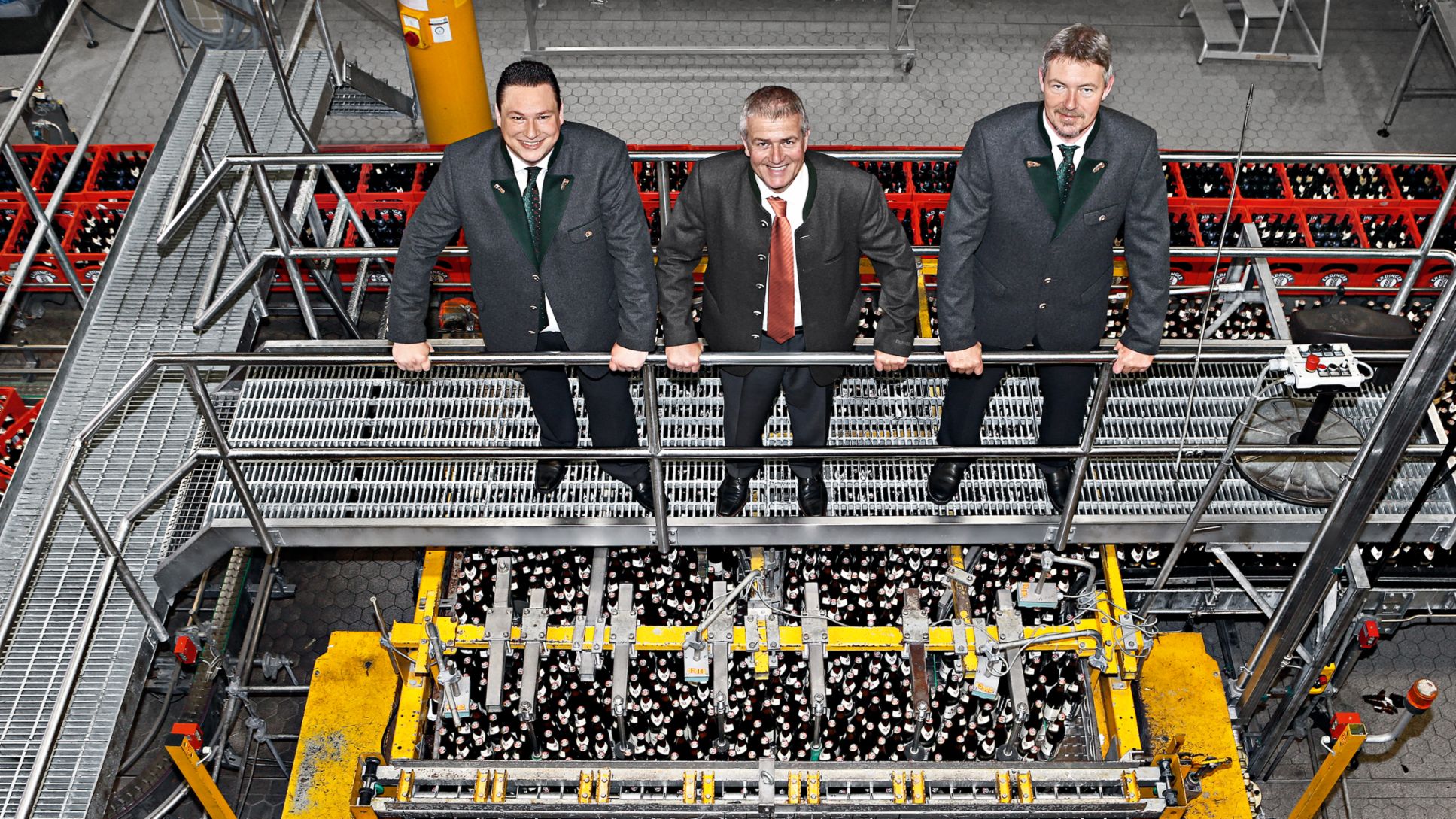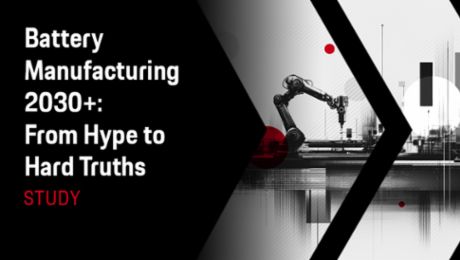Someone who is never satisfied with results might soon be dismissed as a whiner. But working in industry is like engaging in competitive sports: you only make it to the top by constantly striving to be a little better. Which is why the continuous improvement process (abbreviated as CIP) has specially educated coaches—CIP trainers—who help their companies move forward step by step.
Continuous improvement is a hot topic at one of the world’s most famous breweries of wheat beer: Erdinger Weissbräu in Upper Bavaria. Here, Lars Goschenhofer and Manfred Brummer are in charge of the “EV P” or “Erdinger Improvement Process.” The pair did not have an easy time of it at first. Their colleagues viewed the endeavor with skepticism, asking whether it was something they really needed. “When a company is as strong as Erdinger Weissbräu,” says Brummer, “it’s hard to convince people of the necessity of undergoing change.”
There was never really any fear that the management would sacrifice tradition to the push for progress and efficiency. Then as now, Chief Technical Officer Peter Liebert states that “the brewing process is our holy cow.” If his CIP specialists had dared to change something about that, for example by accelerating it, they would probably have promptly been relieved of their task. Yet Liebert was the one who took Goschenhofer and Brummer from their previous posts as head brewer and logistics technician and charged them with making the privately owned brewery in Erding more advanced and efficient in every other area. They have been pursuing this aim now for a good five years—an aim whose nature it is to recede whenever one approaches it.
Intensive program to become CIP expert
Goschenhofer and Brummer have a job description that you don’t find in academic curricula, if´only because so many educational paths can lead to it. And it isn’t always called “CIP trainer” or “CIP expert.” Moritz Kramer from the axle company BPW Bergische Achsen KG (Wiehl, North Rhine-Westphalia), for example, introduces himself as the Director of Process Optimization (PRO P), while Bruno Treibenreif from the Swiss aerospace specialist RUAG Space has the title of Senior Manager Continuous Improvement Processes (CIP). Their common denominator is an interest in questions of management, often coupled with a soft spot for technology and a healthy curiosity.
Kramer from BPW is an economic engineer. Treibenreif from RUAG Space started off as an airlines engineer but pursued further training as a business administrator, controller, and IT specialist. And the two men at Erdinger each have a business degree in addition to their primary professional qualifications. All went through an intensive program to become CIP experts.
CIP experts serve in their companies as guides, navigators, and motivators. They play a key role outside the standard company hierarchy. Their seminars bring everyone together who might contribute to a solution—including overseers, master craftsmen, department heads, and management personnel. CIP experts inform company newcomers about the Kaizen principle, which lays the foundation for continuous improvement processes.
“It’s important to let our colleagues know that the aim is not to cut jobs,” says Treibenreif, “but rather to free up potential by implementing optimizations.” He views a capacity for empathy as a major qualification for the job. Ultimately it’s a matter of instilling an “attitude of continuous improvement” among the employees and encouraging their competitive spirit. “If you want to run a marathon, after all, you’ve got to train for it.”
“If you’re not the first ones way out ahead, you’ll end up behind the ball.”
It takes a while until the abstract idea becomes part of the daily routine throughout the entire company from production to administration. At the Zurich headquarters of RUAG Space, a leading supplier for the aeronautics industry, not everyone was delighted when the new Senior Vice President RUAG Space Switzerland, Dr. Holger Wentscher, announced the introduction of CIP two and a half years ago.
After the start-up phase supervised by a team from Porsche Consulting, Wentscher put internal coordination of the process into the hands of Treibenreif, who was the head of controlling at the time. In his new position, Treibenreif followed the motto of “persuade and follow up”—sure of unwavering support from his boss. “If you’re not the first ones way out ahead, you’ll end up completely behind the ball”, he warns his management colleagues. “This takes a lot of self-discipline when your desk is piling up with things that are directly related to sales and the bottom line.” As for himself, if he neglected CIP he’d be like a woodcutter who didn’t take the time to sharpen his saws.
The brewers of wheat beer at Erdinger have a few more years of CIP experience under their belt. And for any skeptics out there, Goschenhofer has the figures to prove it, showing the productivity reserves that a subjectively successful workforce can tap into by keeping a sharp eye on everything and thinking about ways to improve. In the filling department, for example, one system that at first glance seemed to have attained a maximum of 170 hectoliters an hour four years ago now achieves up to 230 hectoliters, or nearly 13 bottles of wheat beer a second. This is not the product of a single, one-time intervention but rather of a cascade of technical and organizational improvements that yielded unmistakable advances only as a result of their mutual interplay. The best thing about it is that many people contributed to the success, so the entire department can be proud of this achievement.
Ideas affect the entire process chain
BPW, the west German axle maker, can look back on an even longer culture of CIP. It has been working together with Porsche Consulting since 2001. Today’s “PRO P,” Moritz Kramer, joined this medium-sized company in 2007 as an assistant to a risk-bearing partner. When he took over the department of process optimization in 2011, he was already steeped in the issues. Today his team has seven trainers who make sure the employees are all familiar with the “processoriented approach.”
As Kramer notes, “Around ninety percent of the workers at our site have already received training at our model factory and have been sensitized to the topic of process optimization. Moreover, workshops have been held in nearly every division.” BPW used to pursue numerous different methods to optimize processes at individual work stations, but today it has an overall understanding of processes. “Before we go into an area, we do a value stream map and sometimes a value stream design in order to identify issues that will actually take us further.” The workshops therefore focus on ideas that affect the entire process chain as opposed to individual components.
Marc Zacherl, who directs the Porsche Academy, sees the key to success right there, namely, that the CIP experts also work on continuously improving their area of activity. Based on what they have learned at “train the trainer” workshops—sharpening an eye for process optimization, applying best-practice methods, and imagining themselves in the situation of people who have to give up long-familiar work processes—the trainers have to take on the role of innovators. It is ever more important for them to identify customer needs early on and to ensure that processes are promptly adapted accordingly.
“Take action rather than just talking about it,” says Moritz Kramer
As modern change managers, however, the CIP experts are not supposed to act as “solution providers” but rather to accompany managers through change processes as equal sparring partners while anticipating the mood of the employees at the same time in order to communicate incipient changes in appropriate ways. As Zacherl sums it up, “Modern CIP experts enable organizations to solve problems themselves.”
Zacherl also notes the ever greater importance of establishing a routine shop floor management. BPW has been taking this approach for some time now. Under the motto of “improvement by teamwork” or “ViT” in German for short, Kramer and his team are systematically lightening the load of managers, department heads, master craftsmen, and overseers by reducing the number of time-consuming meetings—which frees the latter to spend more time where value is generated: in the production halls. “In very simple terms,” says Kramer, “the aim of this “ViTness” program is to take action rather than just talking about it.” The meetings have not been eliminated, but follow a standard form that keeps them brief and efficient. In addition, multiple meetings on the same topic with different participants are supposed to give way to a single gathering with everyone sitting down together at the same table. “The response continues to be better than I had anticipated,” says Kramer with satisfaction.
But as the head of CIP, Kramer cannot sit back and relax. He not infrequently has to look for new people because his team members have good chances of continuing their careers as department heads. For Kramer, however, that’s not a problem but rather an excellent indication that the CIP idea is working. Brewery director Peter Liebert is of the same opinion. “For CIP you need people where it really hurts to see them leave their previous field.”
Info
Text first published in „Porsche Consulting - THE MAGAZINE", Issue 15
Author: Ulf J. Froitzheim




